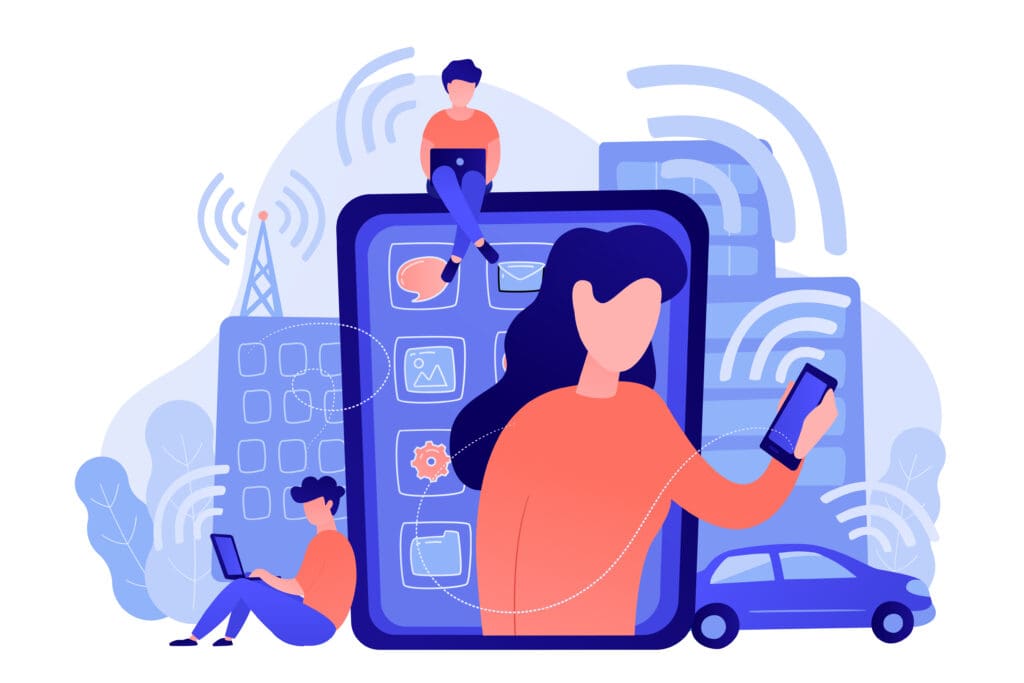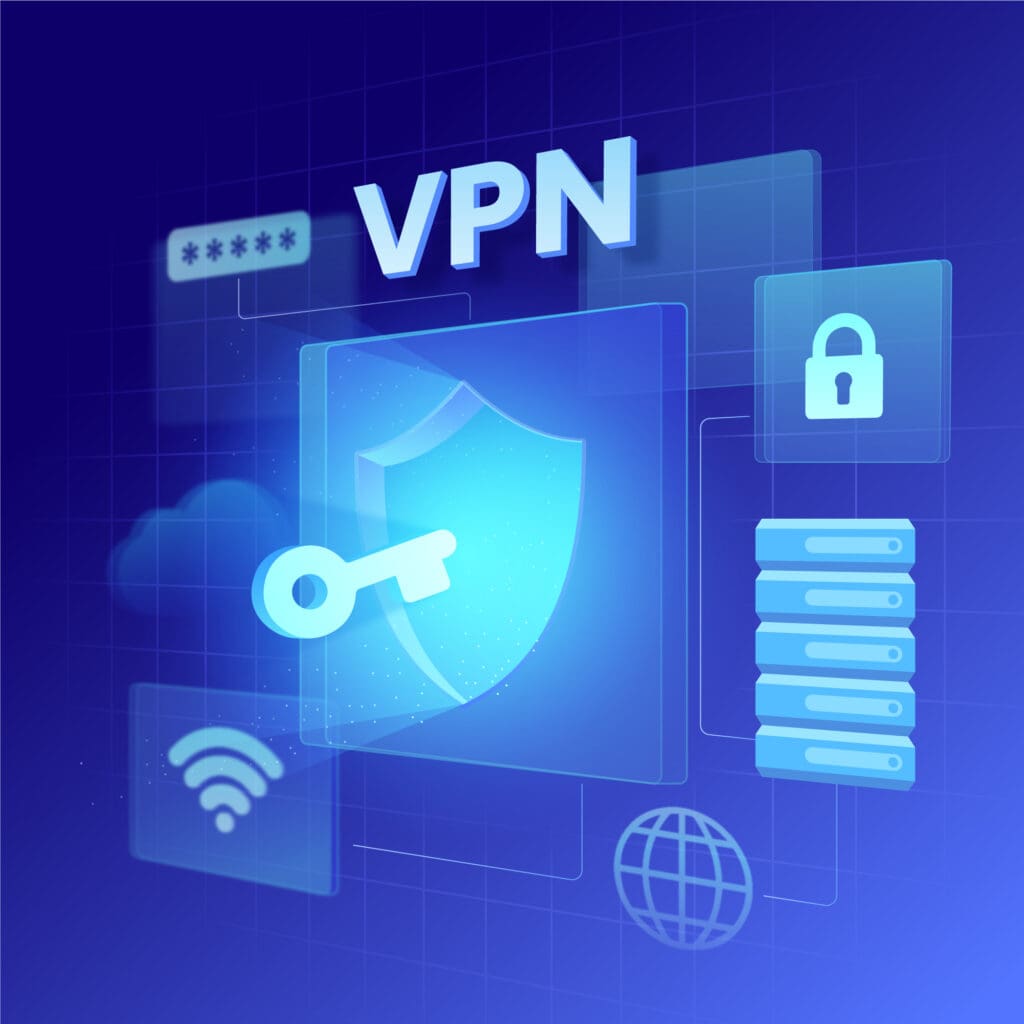We’ve all been there: stuck at the airport waiting for your flight, or relaxing at a café with a cup of coffee, when you spot a free Wi-Fi network. Instinctively, you connect. It feels convenient. You can check emails, stream videos, scroll through social media, or even finish some work. Unfortunately, that simple click on free Wi-Fi can put your digital life at risk. That’s why public Wi-Fi security is so important: without proper precautions, hackers can intercept your data and gain access to sensitive information.
When traveling, working remotely, or simply hanging out, we all enjoy the ability to connect without using mobile data. But free Wi-Fi comes at a cost, and often that cost is your privacy and security.
In this blog, we’ll explore how hackers steal data on public Wi-Fi in places like airports and cafes, what tricks they use, and most importantly, how you can protect yourself through better public Wi-Fi security practices.

Issues with Public Wi-Fi
In contrast to home internet, public Wi-Fi networks are almost always either open or poorly secured. Who knows how many users might be connected to the same network and how many of them may be bad actors?
Picture public Wi-Fi like a busy café with people all talking loudly. Any passerby can reasonably hear your conversation if they try. That’s exactly how hackers see public Wi-Fi as an open opportunity to “listen in” on your online activity without public Wi-Fi security, your private data can be overheard just as easily.
Most Popular Methods Used By Hackers To Steal Your Data
Now from understanding how hackers steal your data over public Wi-Fi, let’s go through some of the common approaches.
1.Man-in-the-Middle (MITM) Attacks
This is probably the most common trick. You are about to send a message to a friend. Usually, the message gets sent from you to your friend directly. A MITM is an attack where the hacker is in the middle between you and the network.
They can then capture any and all of your data, login details, email/text communications, and even payment information. Everything appears normal to you while someone is listening in on everything you say. This is why public Wi-Fi security awareness is so important.
2. Imposter Wi-Fi Hotspots
Hackers can be sneaky. They’ll set up fake Wi-Fi networks with names like “Free Airport Wi-Fi” or “Cafe Guest”. It looks harmless, so you click and connect but instead of the cafe’s network, you’ve just logged onto the hacker’s laptop, giving them a front-row seat to everything you do online.
Once you connect to the hacker’s laptop, he can see every website you visit, and you can even infect or inject malware into your device. Fake hotspots are one of the biggest threats to public Wi-Fi security today.
3. Packet Sniffing
When you are on an open network, your data packets sent on the internet (little packets of information), can sometimes be seen by those on the network. Hackers utilize tools known as “packet sniffers” to obtain that information.
If the website you are using is unencrypted (does not start with https://) your data can be read like an open book.This highlights why public Wi-Fi security requires you to use secure websites whenever possible.
4.Session Hijacking
Ever noticed how you stay logged into Facebook or Gmail without entering your password each time? That’s because of something called a “session cookie.” Hackers can steal these cookies on public Wi-Fi and use them to impersonate you.
This means they don’t even need your username and password; they can just “become you” online.Good public Wi-Fi security habits can help stop this.
5. Malware Distribution
Some hackers take it a step further by putting malicious code into the download or pop-up. For example, have you ever connected to a free Wi-Fi network and you received a message that said: Update required to use this network.
If you click on it the hacker at this point could install malware and have access to your device remotely.Malware is one of the biggest threats to public Wi-Fi security, especially in busy places like airports where travelers are distracted.
Real-Life Risks: What’s at Stake
It’s easy to have that thought of “I’m just checking Instagram, what could the harm be?” But hackers aren’t picky . Even a small amount of personal information can be worth something.
- Account usernames and passwords to social media, bank or work accounts
- Your credit card information when you do online purchases on public wi-fi
- Emails and personal messages that can reveal sensitive data
- Work documents if you’re handling office files remotely
- Identity theft where your stolen information is used for fraud
A hacker, somewhere in a cafe just a few tables away, can collect enough information to come up with a detailed outline of who you are online
The good news is you don’t have to stop using public wi-fi entirely. You can still take advantage of it, safely, by building a few good habits. With a little care, you can safely get on public Wi-Fi networks. That’s why public Wi-Fi security is no longer optional; it’s essential.
Here are some tips you can actually use:

1. What is a VPN (Virtual Private Network)
A MITM is an attack where the hacker is in the middle between you and the network.You can think of it like a private tunnel from you to the internet, if someone intercepts it will look like gibberish. If someone intercepts your data, instead of reading it, they would just see nonsense.
2. Double-Check the Wi-Fi Network Name
Before connecting, ask a staff member for the exact network name.Hackers depend on you jumping on a connection without exploration; don’t get caught up in that.
3. Use HTTPS Websites
Before you type in any personal details, take a quick glance at the top of your browser. If you see‘https://’ and a little padlock icon, you’re in safer hands; it means the site is protecting your information.
4. Turn Off Automatic Connections
Many devices automatically connect to known networks. Turn this feature off so your phone or laptop doesn’t blindly connect to a hacker’s fake hotspot.
5. Avoid Sensitive Transactions
Don’t check your bank account or make online purchases over public Wi-Fi. If you must, use mobile data instead.
6.Have Your Software Up To Date
You may find those annoying, unnecessary updates on your phone or laptop inconvenient, but updates often come with important security fixes. By not updating you are allowing hackers to exploit vulnerabilities that are many times old.
7. Utilize Two-factor Authentication (2FA)
If a hacker does steal your password, you have an extra lock with 2FA. They will need to use a code sent to your phone or email, which makes it much more difficult for them to access your accounts.
8. Forget the Network After Use
After you’re done using public Wi-Fi, make sure to delete it from your “saved networks”. It prevents your device from reconnecting automatically in the future.
Human Side: Why We Still Risk It
Here’s the truth: most of us already know public Wi-Fi is risky, yet we still use it. Why? Because it’s easy, free, and convenient. Nobody wants to burn through mobile data when free internet is just a click away.
Hackers exploit this human tendency. They know we prioritize convenience over caution. This is the main reason I’m trying to instill awareness. This isn’t about living in fear, it’s about being aware and making small, smart choices to be safe.
Conclusion
Publicly available Wi-Fi in airport terminals and coffee shops is pretty sweet, but it can sometimes be a trap. Hackers have a lot of brains, but they rely on the fact that you and I will be careless. When we understand what they understand and are cautious, public Wi-Fi can provide the benefits of a simpler, less stressful digital life — without sharing all of our personal information with them.
This is precisely the reason for ethical hacking: to study these hacks, reveal weaknesses, and educate people on defending themselves. Ethical hackers allow us to help improve the security of public Wi-Fi and protect our data by using the same tactics as hackers.
